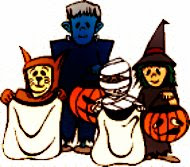There are different ways to celebrate New Year in different cultures.
In some parts of the world the traditions and way of celebration is similar, while in many parts it differ widely from one another.
Let us check out some interesting customs that people follow during New Year celebration.
Australian New Year Culture
Like most parts of the world, New Year in Australia is celebrated on the January 1.
The day is observed as a public holiday in all over the country. Going for picnics is a common way of celebrating the New Year’s Day.
Since New Year falls in summer in Australia many people, also plan for a vacation to beaches or hills. The celebration generally begins an evening before on December 31, which is more commonly known as the New Year’s Eve.
To ring the New Year people gather on the streets and start making loud noise with car horns, whistles, trumpets and church bells.
New Year Culture in US
It is the festive time in United States during the New Year.
 Nightlong parties, fireworks, live musical performances and grand feast at every nook and corner of the country defines the festive mood of the people.
Nightlong parties, fireworks, live musical performances and grand feast at every nook and corner of the country defines the festive mood of the people. A common tradition of the Americans is to kiss each other when the clock strikes 12 in the midnight of December 31.
With love and free spirit, the New Year is welcomed in United States.
New Year Culture in Great Britain
A very popular custom of New Year in Great Britain is first footing.
The common belief is that the first male guest to enter any house after the midnight brings in joy and good luck to the household.
Generally, the man carries bread, money and coal in forms of gift to symbolize the well-being of the family in the forthcoming year.
If a woman, or a man with red hair or who is blond enters the house first after midnight, it is regarded as a bad luck.
Trafalgar Square and Piccadilly Circus remains absolutely crowded in London on the New Year Eve.
People start gathering from the evening to witness live band performances followed by fireworks and chimes of London's big Ben at the advent of midnight.
New Year Culture in South Africa
It is the time for ringing church bells and firing gunshots when it comes to celebrating New Year in South Africa.
People dressed in bright colored clothes go out on the streets as they take part in processions and carnivals.
Live music and dance shows mark these celebrations. People often gather at community halls for a grand feast.
It is almost compulsory for the South Africans to visit the church and pray for their well-being before ringing in the New Year.
Many such similar customs are followed in other parts of the world like Austria, Belgium, France, Germany, Scotland, and Russia and so on. In France, the New Year’s Day is more popularly known as Jour des Etrennes.













